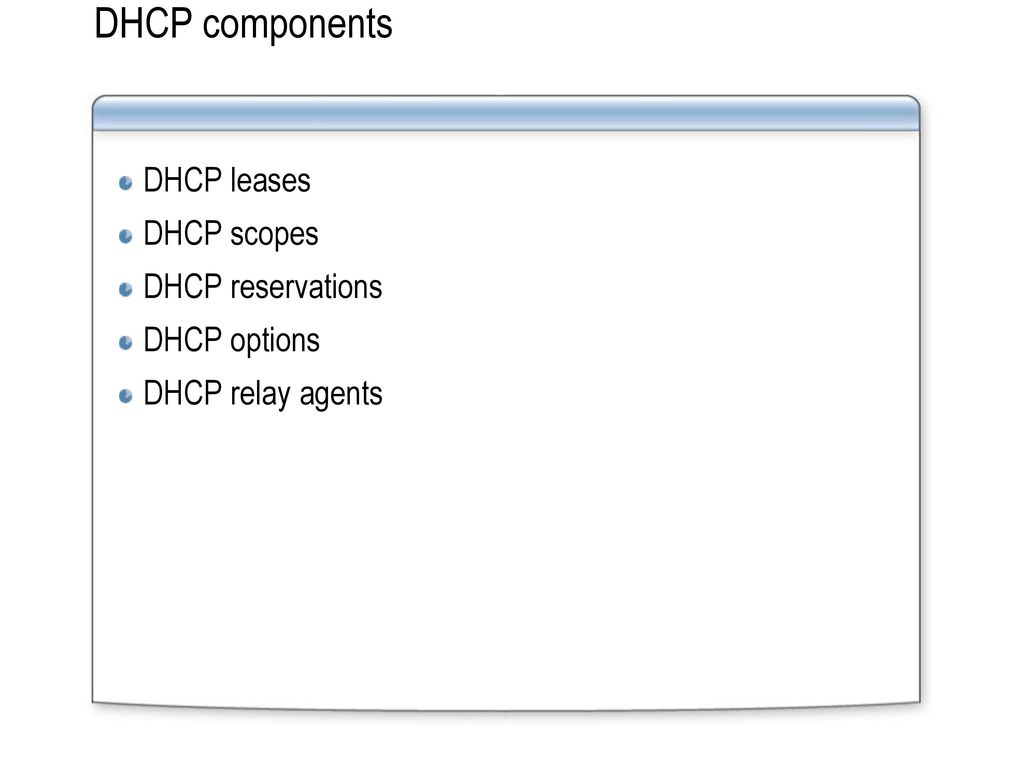How To Install Dhcp Relay Agent In Centos 6
If you have two different networks and you don’t want to install a DHCP Server on each side you can use “DHCP Relay Agent” Service. Here a quick tutorial: 1.

DHCP-Server Install “DHCP-Server” Role 2. Configure DHCP Scopes Scope A 192.168.10.11-192.168.10.253 Scope B 192.168.11.11- 192.168.11.253 3. Router Should have two Network cards.

For each network one. Network A IP: 192.168.10.254/24 Network B IP: 192.168.11.254/24 4. Install “Remote Access” Role 5.
Run “Routing and Remote Access” 6. “Configure and Enable Routing and Remote Access” 7.
Sep 4, 2014 - To me it looks like your DHCP relay is listening on the wrong interface. The DHCP relay has to listen receive DHCP requests by clients on the interface which is configured for the client subnet, so that it can relay that information to the DHCP server. Your dhcrelay commandline suggests you are using eth0. Dynamic Host Configuration Protocol is a network protocol used to. The should also work on CentOS 6.x and other older versions. Install DHCP server and. Il Signore Dei Tarzanelli Completo Download Movies here.
Choose “Custom Configuration” 8. Choose “LAN routing” and start the service 9. Install the DHCP Relay Agent Right Click on General in IPv4 and choose “New Routing Protocol” and there you can finally choose “DHCP Relay Agent”. Right Click on” DHCP Relay Agent” and choose “Properties”. There you add your DHCP Server. In this case it would be 192.168.10.10. Add the Network B Interface to the “DHCP Relay Agent”.
You should be done. In Windows 2008 it’s possible that you need to make adjustments to your Windows Firewall. You can test on your client to get an IP Adress. Run from the command console: Ipconfig /release and Ipconfig /renew. After that you should be able to see the IP address if you type: ipconfig.
What is DHCP? DHCP stands for Dynamic Host Configuration Protocol. DHCP is a standardized network protocol used on Internet Protocol networks for dynamically distributing network configuration parameters, such as IP addresses for interfaces and services. DHCP Server can be any server (Linux or Windows) that is used to distribute IP addresses automatically to the clients in the network.
Since, DHCP Server assigns IP addresses automatically to all systems, a system or Network administrator need not to assign IP addresses manually to every single machine in the network. DHCP is opt for system or Network administrator who is managing thousands of systems. In this tutorial, let us see how to install and configure DHCP Server in CentOS and Ubuntu systems.
For the purpose of this tutorial, I will be using the following three systems: • CentOS 7 64bit Minimal server (DHCP Server) • Ubuntu 15.04 64bit Minimal server (DHCP Server) • Ubuntu 14.04 Desktop (DHCP Client) A note of warning: Do not use two or more DHCP servers at the same time in your network. The client systems might not be able to get IP addresses from the multiple DHCP servers and it leads to IP address conflict issue. If your Router or Switch has DHCP feature enabled by default, you need to turn it off too. More importantly, you must a assign a static IP address to your DHCP server’s network interface card. Install DHCP Server in CentOS First let us see how to install and configure DHCP server in CentOS 7 64bit. The same steps will work on CentOS 6.x and other older versions.
Buzof Keygen Free. Log in as root user. To install DHCP server on CentOS system, run: yum install dhcp 1.1 Configuration.